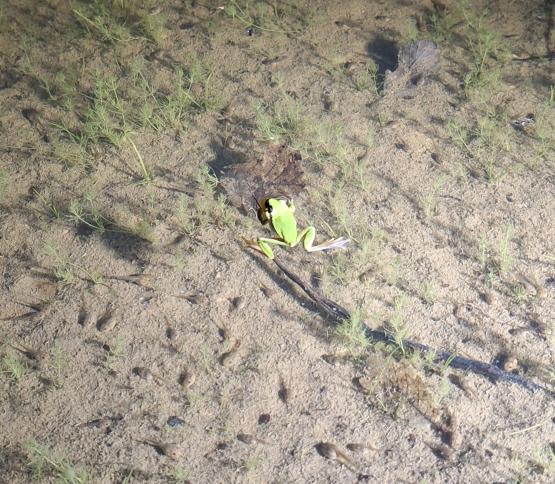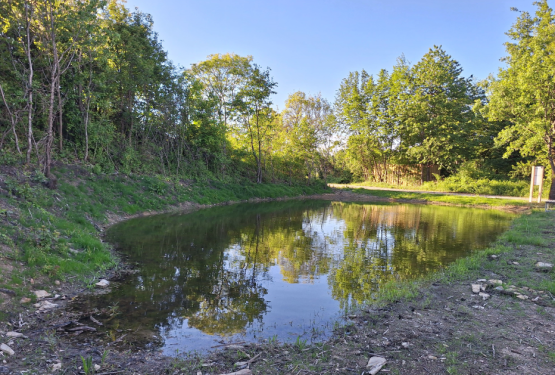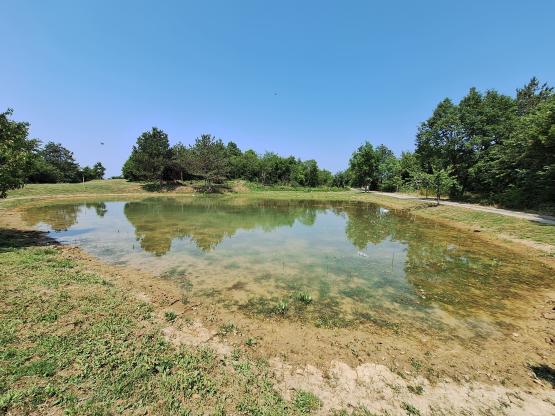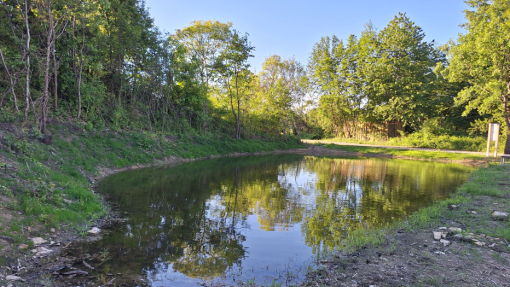At the end of 2024, the Municipality of Hrpelje-Kozina began restoring the natural pond “Na Zavrteh,” located near the village of Nasirec, within the Natura 2000 protected area. Due to nature conservation restrictions, the restoration was carried out during the winter months, when the impact on sensitive species is minimal.
Before the restoration, the pond was heavily overgrown, and few people knew that a second, smaller pond was hidden nearby among the shrubs. As part of the restoration work, water was pumped out of the main pond, selected trees, shrubs, stumps, and roots were removed, and sediment was excavated. The southern part of the pond was restored across an area of approximately 700 m², and the northern part covers about 320 m². The pond bottom was sealed using a mixture of existing and new clay, ensuring better water retention and impermeability.
In the corridor between the northern and southern sections of the pond, fruit trees were planted, a bench was installed for visitors, and an informational sign was placed to highlight the pond’s ecological importance and the species it supports.
The aim of the project was to enhance the pond’s role as a natural habitat for amphibians, aquatic plants, and other species, while also preserving the cultural landscape and promoting biodiversity in the area.
By spring 2025, the first positive results were already visible. The pond was quickly recolonized by various amphibian species – brown frogs were observed spawning, followed by green frogs later in the season. Monitoring confirmed the presence of smooth and great crested newts. In the nearby Regalnica stream, we also confirmed the presence of the European tree frog, an important indicator of a healthy environment. A particularly beautiful aquatic plant found in the pond is the water buttercup, which blooms with delicate white flowers and thrives only in clean water.
The restoration of the “Na Zavrteh” pond is a successful example of how well-planned, nature-friendly measures can improve the condition of natural habitats and help preserve endangered species. The pond is once again becoming an important refuge for wildlife and a peaceful spot for visitors who appreciate the beauty and tranquility of the karst landscape.




